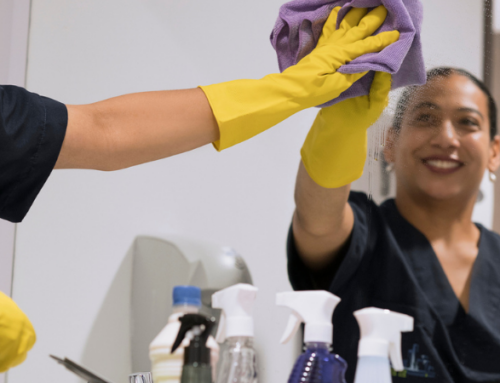Stains are an inevitable part of life, but they don’t have to be a permanent eyesore in your home. In this guide, we will explore the fascinating science behind effective stain removal and provide you with a wealth of practical tips and tricks to ensure your home stays spotless. Whether it’s a spilled glass of red wine, a stubborn grease stain, or a mysterious mark on your favorite shirt, we’ve got you covered. Let’s dive into the world of stain removal techniques and house stain cleaning.
The Science of Stain Removal: Tips and Tricks for a Spotless Home
Stains can be incredibly frustrating, but understanding the science behind them is the first step to successful removal. Let’s explore the key principles of stain removal and how to apply them effectively.
Stain Types and Their Composition
Stains come in various forms, each with its unique composition. To tackle stains effectively, it’s crucial to know what you’re dealing with. Here are some common stain types:
- Protein-Based Stains: These include stains from blood, milk, and egg. The proteins in these substances can be broken down with the right techniques.
- Oil-Based Stains: Grease and oil stains, such as those from cooking or motor oil, can be particularly stubborn. Understanding how to dissolve oils is key.
- Tannin-Based Stains: Red wine, coffee, and tea fall into this category. Tannins can bind to fabric and require specific treatments.
- Ink Stains: Ink can be challenging to remove, but the right approach can make all the difference.
The Role of pH
pH levels play a crucial role in stain removal. Knowing whether a substance is acidic or alkaline can help you choose the right cleaning agents. For example:
- Acidic Stains: Vinegar can be effective against acidic stains like coffee, while alkaline stains, like grease, require a different approach.
- Alkaline Stains: Baking soda can be your ally when dealing with alkaline stains.
Quick Action Is Key
The longer a stain sits, the harder it becomes to remove. Immediate action is often the most effective strategy. Here’s what you should do:
- Blot the stain gently to remove excess liquid without spreading it.
- Identify the type of stain to determine the appropriate treatment.
- Test any cleaning solution on a small, inconspicuous area to ensure it won’t damage the material.
- Follow the treatment process carefully, and be patient.
DIY Stain Removal Techniques
Now, let’s get practical with some DIY stain removal techniques that can save your day:
- For Red Wine Stains: Try a mixture of hydrogen peroxide and dish soap.
- Grease Stains: Apply cornstarch or talcum powder to absorb the oil before washing.
- Ink Stains: Use rubbing alcohol or hand sanitizer to break down the ink.
- Blood Stains: Cold water is your best friend when it comes to blood stains.
The Importance of Fabric Care
Different fabrics require different approaches. Delicate fabrics like silk and wool need extra care. Always check clothing labels and follow the manufacturer’s instructions for the best results.
Prevention is Key
The best way to deal with stains is to prevent them in the first place. Consider using stain-resistant fabrics, using placemats and coasters, and being mindful when cooking or enjoying your favorite beverages.
Frequently Asked Questions (FAQs)
Q: Can I use bleach to remove any type of stain? A: Bleach is effective against some stains but can damage fabrics and should be used with caution.
Q: What should I do if I’m not sure about the type of stain? A: Start with a gentle approach like cold water and work your way up to stronger treatments if needed.
Q: Are commercial stain removers better than DIY solutions? A: Not necessarily. DIY solutions can be just as effective and are often gentler on fabrics.
Q: Can old stains be removed? A: It’s more challenging but not impossible. Try pre-soaking and using specialized stain removers.
Q: Is it safe to use bleach on colored fabrics? A: No, bleach can remove color from fabrics. Use color-safe bleach if needed.
Q: What’s the best way to remove pet stains? A: For pet stains, use an enzyme-based cleaner to break down the organic matter.
Conclusion
Now armed with the knowledge of stain removal techniques and house stain cleaning, you can confidently tackle even the toughest stains. Remember to act quickly, identify the stain type, and choose the appropriate treatment method. Prevention is always better than cure, so take steps to minimize stains in your home. With these tips and tricks, you’ll be well on your way to maintaining a spotless home.





